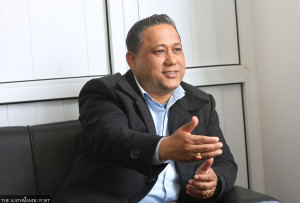Interviews
Alan Arnette: It will not surprise me if climbing does not resume until spring
One of the most well-known chroniclers of Everest, Arnette talks about his love for mountains, the precarious situation the mountaineering industry is in due to Covid-19, and how he is raising funds for out-of-job climbing sherpas.
Tsering Ngodup Lama
When Alan Arnette trekked to Everest Base Camp in 1997 and saw Everest for the first time, it marked the beginning of his love affair with the mountains and Nepal. In 2002, he returned to Nepal, this time to climb Everest but he had to abort his climb at about 8,400 metres, a few hundred metres shy from the summit. After two more unsuccessful attempts in 2003 and 2008, Arnette reached the summit of Everest on his fourth attempt, in 2011. By then he was already a known figure among Everest aficionados, for his extensive reporting on Everest expeditions on his blog, alanarnette.com, since 2002. Today, Arnette is one of the most trusted sources for everything related to Everest expeditions.
In an interview with the Post's Tsering Ngodup Lama, Arnette talks about his love for Nepal and its mountains, the impact of Covid-19 on the country's mountaineering industry, and how he is raising funds for out-of-job climbing sherpas with his project Virtual Everest 2020—Support Sherpas. Excerpts:
You are one of the most trusted chroniclers of Everest. Tell us about what got you interested in mountaineering?
I began climbing at age 38 while living in Switzerland. Mont Blanc was my first big climb, but it was a trek to Everest Base Camp in 1997 when my love affair started with the mountains and Nepal. I stared at the mountains in awe of their scale. I enjoyed every aspect of trekking and expedition life. However, the people of Nepal, especially the Sherpas, profoundly touched my spirit. I found the cultures inspirational and motivational. I returned home a better version of myself thanks to that trip.
From 1997 to today, 2020, I have been on a significant climb almost every year. I've completed 37 major expeditions, including the Seven Summits, Everest, Manaslu, and K2. I started writing about my experiences for my blog, www.alanarnette.com, and today cover climbs on the most significant peaks year-round on my blog plus for several outdoor magazines, including Outside Online.
COVID-19 has forced the closure of the spring climbing season in Nepal. What are your views on the impact of it on the tourism industry and expedition companies?
This is a devastating blow to Nepal's tourism industry, which is a major contributor to the country's economy, particularly because the pre- and post-monsoon seasons represent the majority of tourist visits; thus, losing spring has a severe financial impact.
It will not surprise me if climbing does not resume until spring 2021. I suspect we will see many financially weak or very small companies go out of business or merge to survive. Nepal has hundreds of trekking agencies, so this may be a case of only the strong will make it through this challenging period.
After Nepal decided to close the spring climbing season, you started your project Virtual Everest 2020—Support the Sherpas. What led you to start the project?
I've been covering the Everest season since 2002. So when it became clear there would be no climbing in 2020, I thought I could do fictional coverage to keep my two million blog visitors engaged. And more importantly, I wanted to use my platform to raise funds and give back to the climbing community in a more tangible way. To do that, I have collaborated with several expedition companies, and readers can choose to donate to any of the companies listed on my blog.
This effort is all about the global mountaineering community banding together to help our climbing sherpa friends who support us and often with great sacrifice. I know that my climbing experience has been more satisfying with my climbing sherpa friends. I have a personal connection with so many climbing sherpas that I wanted to try to help.
But how do you ensure that the companies you have collaborated with are being transparent with the funds collected?
I know each of the participating companies exceptionally well, having climbed with many of them. I spoke with the owners or founders and explained the programme, making it clear that while they have control over the collection and distribution of the donations, the goal is to support the climbing sherpa community with this project. Again, I know there are many worthy causes, and there are other efforts to help them while we focus on the climbing sherpas. I reached out to many guide companies, but some chose not to participate. Also, I hope the Nepal government implements a broad support program for all Nepali citizens.
What do you think are the lessons that the industry can learn from the crisis?
Perhaps the single lesson there is to learn is how vulnerable humans are to disease. I think we should all realise the need to work together to solve the most challenging problems facing us. Individually, we cannot answer these challenges, similar to climbing Everest; it takes a team where everyone does their job.




 10.12°C Kathmandu
10.12°C Kathmandu










%20(1).jpg&w=300&height=200)

